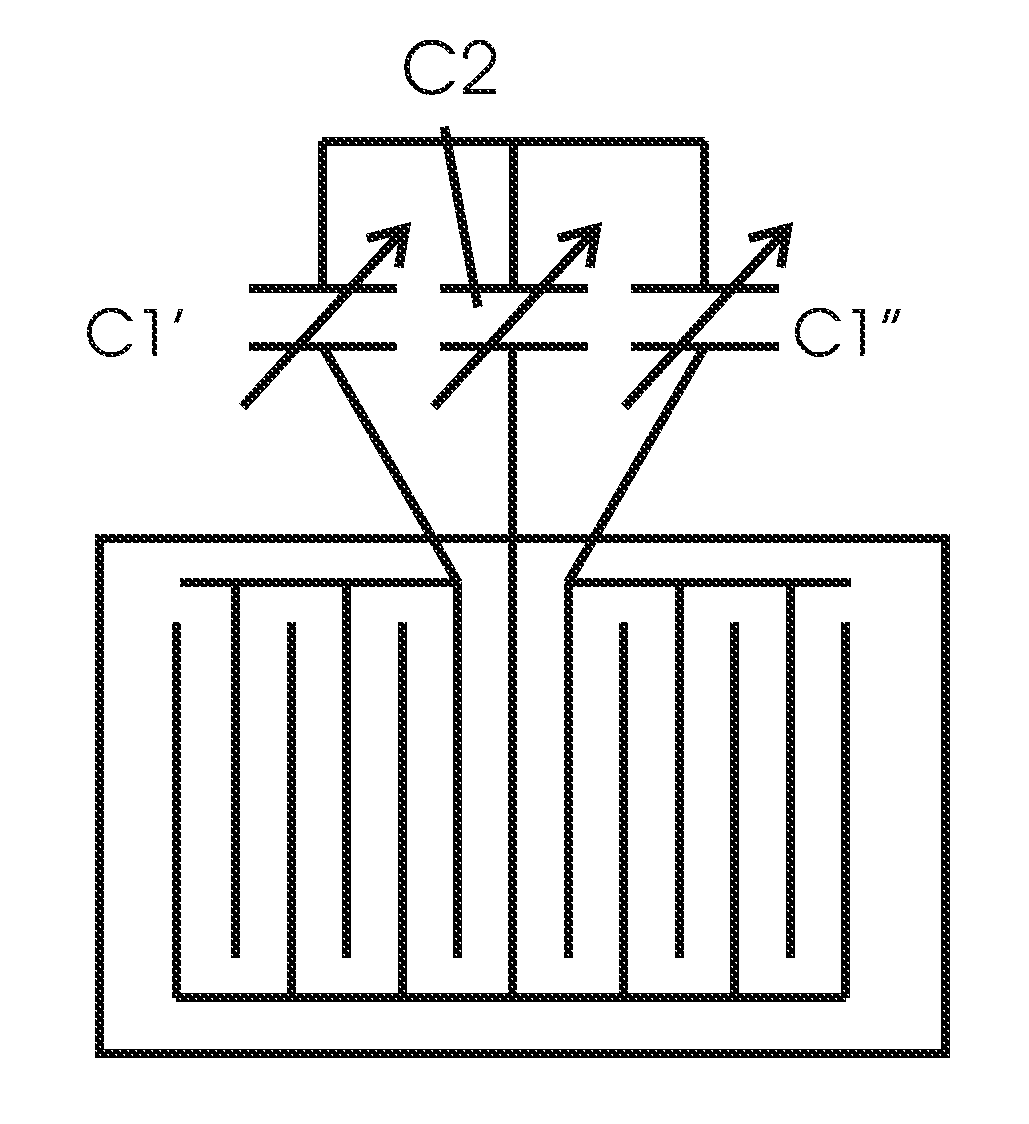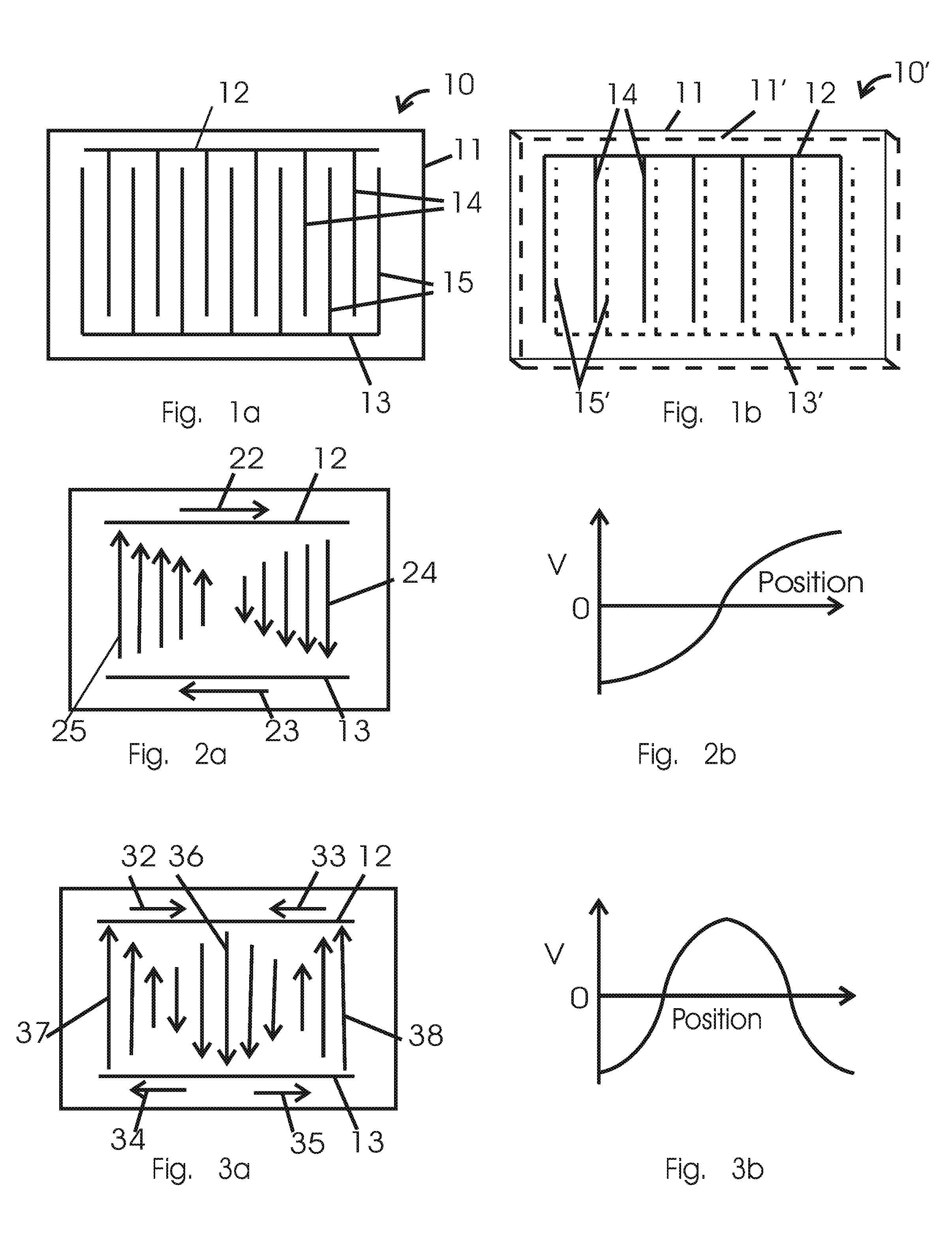Millipede surface coils
a surface coil and millipede technology, applied in the field of magnetic resonance imaging (mri) apparatus, can solve the problems of lowering the signal to noise ratio, requiring fairly large externally applied bias voltages to completely turn on or off pin diodes, and difficult to achieve a high degree of accuracy, so as to improve the filling factor and minimize the magnetic field “hot spot” around the elements. , the effect of uniform detection sensitivity
- Summary
- Abstract
- Description
- Claims
- Application Information
AI Technical Summary
Benefits of technology
Problems solved by technology
Method used
Image
Examples
Embodiment Construction
[0027]The RF coil used for transmitting radio frequency fields to the object or animal and / or detecting the responding RF fields from the object form the subject of this invention. The subject work is directed particularly toward coils that can be effectively used for small animals such as mice or rats, or small samples of material. To obtain the highest sensitivity the coil should be placed as close as possible to the region of the object being imaged. This might be, for example, the brain of a mouse or rat, or a small region near the surface of a larger animal or object.
[0028]FIG. 1a shows a millipede surface coil 10 illustrating one aspect of the invention. The millipede surface coil 10 of FIG. 1a comprises a first electrically conducting end strip 12, and a second electrically conducting end strip 13, which is spaced apart and parallel to the first conducting end strip. Typically there are a hundred or more conducting rungs elements, 14, 15, placed between the two end strips, le...
PUM
 Login to View More
Login to View More Abstract
Description
Claims
Application Information
 Login to View More
Login to View More - R&D
- Intellectual Property
- Life Sciences
- Materials
- Tech Scout
- Unparalleled Data Quality
- Higher Quality Content
- 60% Fewer Hallucinations
Browse by: Latest US Patents, China's latest patents, Technical Efficacy Thesaurus, Application Domain, Technology Topic, Popular Technical Reports.
© 2025 PatSnap. All rights reserved.Legal|Privacy policy|Modern Slavery Act Transparency Statement|Sitemap|About US| Contact US: help@patsnap.com



